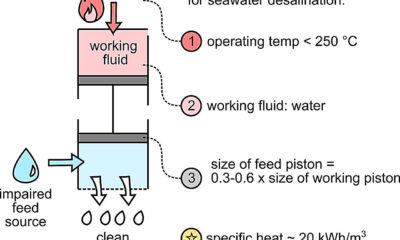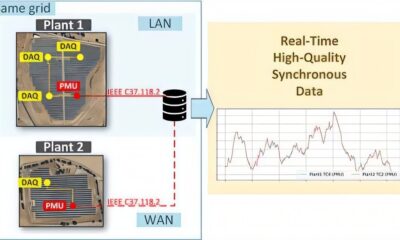Tech
More people are using AI in court, not a lawyer. It could cost you money—and your case

When you don’t have the money for a lawyer to represent you in a court case, even judges can understand the temptation to get free help from anywhere—including tapping into generative artificial intelligence (AI).
As Judge My Anh Tran in the County Court of Victoria said this year: “Generative AI can be beguiling, particularly when the task of representing yourself seems overwhelming. However, a litigant runs the risk that their case will be damaged, rather than helped, if they choose to use AI without taking the time to understand what it produces, and to confirm that it is both legally and factually accurate.”
Our research has so far found 84 reported cases of generative AI use in Australian courts since ChatGPT launched in late 2022. While cases involving lawyers have had the most media attention, we found more than three-quarters of those cases (66 of 84) involved people representing themselves, known as “self-represented litigants.”
Those people—who sometimes have valid legal claims—are increasingly turning to different generative AI tools to help on everything from property and will disputes, to employment, bankruptcy, defamation, and migration cases.
Our ongoing research is part of an upcoming report for the Australian Academy of Law, being launched later in the year. But we’re sharing our findings now because this is a growing real-world problem.
Just this month, Queensland’s courts issued updated guidance for self-represented litigants, warning using “inaccurate AI-generated information in court” could cause delays, or worse: “a costs order may be made against you.”
As New South Wales Chief Justice Andrew Bell observed in a decision in August this year, the self-represented respondent was “admirably candid with the court in relation to her use of AI.” But while she was “doing her best to defend her interests,” her AI-generated submissions were often “misconceived, unhelpful and irrelevant.”
If you’re considering using AI in your own case, here’s what you need to know.
The temptation to rely on AI
Self-representation in Australian courts is more common than many people realize.
For example, 79% of litigants in migration matters at the Federal Circuit Court were unrepresented in 2023-2024.
The Queensland District Court has said “a significant number of civil proceedings involve self-represented parties.” The County Court of Victoria last year created easy-to-use forms for self-represented litigants.
But as the availability of free or low-cost generative AI tools increases, so does the temptation to use AI, as our recent research paper highlighted.
The risks if AI gets it wrong
Relying on AI tools that produce fake law can result in court documents being rejected, and valid claims being lost in court.
If you’re a self-represented litigant, the court system gives you the right to provide evidence and argument to support your case. But if that evidence or argument is not real, the court must reject it. That means you could lose your day in court.
In those circumstances, the court may make a costs order against a self-represented litigant—meaning you could end up having to pay your opponent’s legal costs.
Lawyers here and overseas have also been caught relying on inaccurate AI-generated law in court.
But a key difference is that if a lawyer uses fake cases that the court rejects, this is likely to amount to negligence. Their client might be able to sue the lawyer.
When someone representing themselves makes the error, they only have themselves to blame.
How can you reduce your risks?
The safest advice is to avoid AI for legal research.
There are many free, publicly available legal research websites for Australian law. The best known is the Australasian Legal Information Institute (AUSTLII). Another is Jade.
Court libraries and law schools are open to the public and have online resources about how to conduct legal research. Libraries will often have textbooks that set out principles of law.
Australian courts, such as the Supreme Court of Queensland, Supreme Court of NSW and Supreme Court of Victoria, have all issued guidance on when generative AI can and cannot be used.
Check if there’s a guide from the relevant court for your case. Follow their advice.
If you still plan to use generative AI, you must check everything against a reliable source. You need to search for each case you plan to cite, not just to make sure it exists, but also that it says what an AI summary says it does.
And as Queensland’s guide for self-litigants warns: “Do not enter any private, confidential, suppressed or legally privileged information into a Generative AI chatbot […] Anything you put into a Generative AI chatbot could become publicly known. This could result in you unintentionally breaching suppression orders, or accidentally disclosing your own or someone else’s private or confidential information.”
Conducting legal research and producing court documents is not easy. That’s what trained lawyers are for, which is why affordable, accessible legal services are necessary for a fair justice system.
AI is being used to address an access to justice problem that it is not well-suited to—at least, not yet.
This article is republished from The Conversation under a Creative Commons license. Read the original article.![]()
Citation:
More people are using AI in court, not a lawyer. It could cost you money—and your case (2025, September 29)
retrieved 29 September 2025
from https://techxplore.com/news/2025-09-people-ai-court-lawyer-money.html
This document is subject to copyright. Apart from any fair dealing for the purpose of private study or research, no
part may be reproduced without the written permission. The content is provided for information purposes only.
Tech
Renewable energy is reshaping the global economy—new report
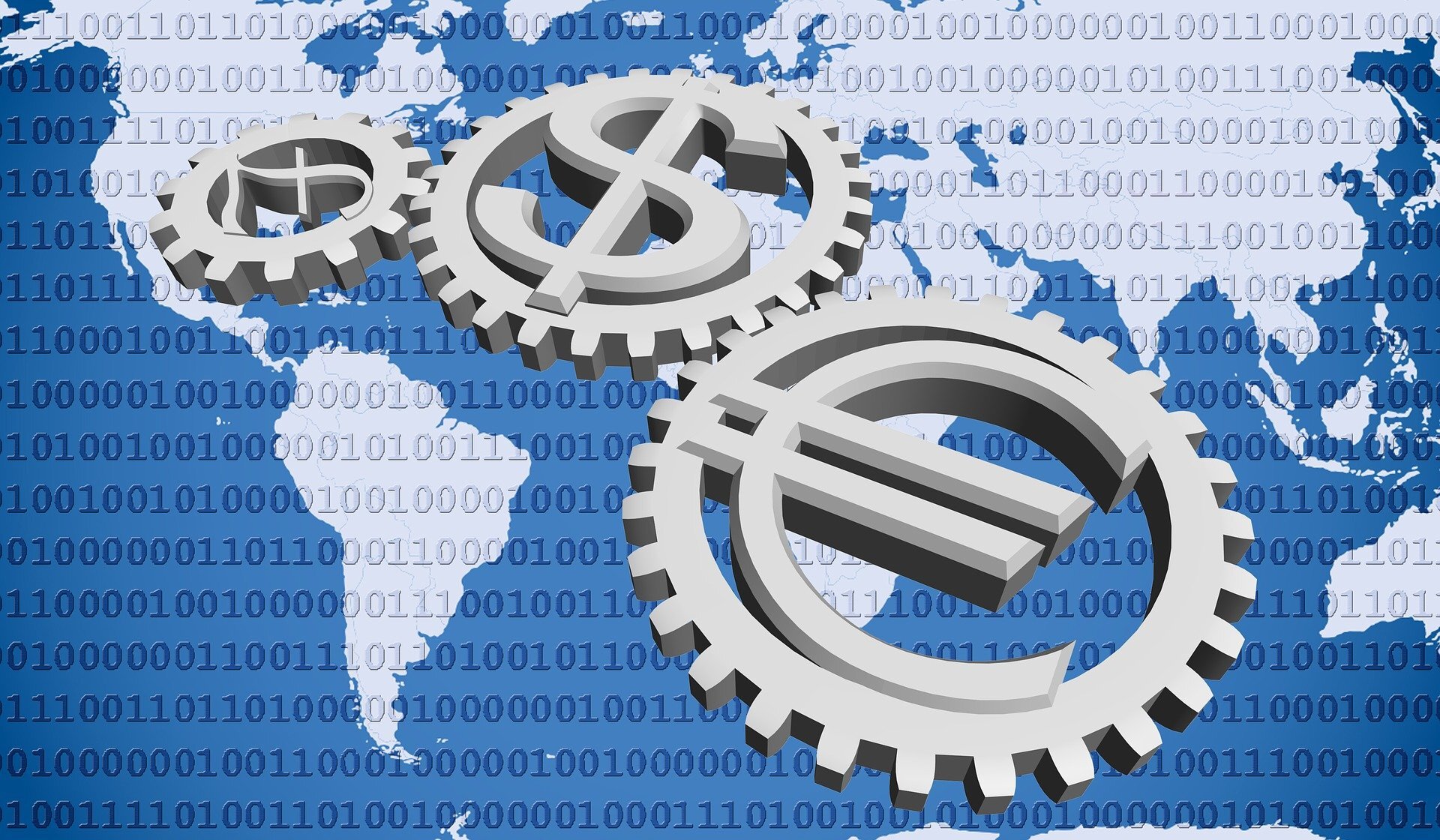
World leaders gather for the UN climate summit (COP30) in Belém, Brazil, amid concerns about the slow progress in cutting global carbon emissions. Ten years into the historic Paris climate agreement, we are off track to meet its core objective, to keep global warming well below 2°C, relative to pre-industrial levels.
Yet there are glimmers of hope, and none more important than the astounding progress on renewable energy. Renewables are now so cheap that the clean energy transition is no longer an economic burden, it is a momentous opportunity.
Climate change campaigners tend to see renewables as an environmental imperative, an effective way of cutting emissions. They are that, of course. But they are also a powerful engine of investment, jobs and growth. They are reshaping the global economy. In my team’s new report, we lay out the evidence.
The first economic dividend of renewables is inclusion. Access to affordable energy remains a critical sustainable development goal, which shapes everything from education to health to women’s empowerment. Distributed renewables—from solar home systems to mini-grids—are our best chance yet of bringing affordable energy to all.
Across Africa, Asia and Latin America, renewable energy entrepreneurs are doing what national grids have struggled to do: reaching remote villages and replacing polluting diesel generators with clean, reliable power.
Because of its modularity, renewable electricity can be built out fast, expanded flexibly and maintained locally. Renewable energy firms are combining these technical advantages with new business models that make renewables more accessible (for example, through pay-as-you-go models) and keep benefits in the local community (for example, by offering energy services like cold storage, phone charging and water pumping, as well as electricity).
Investment, jobs and growth
If inclusion is the first dividend, investment is the second. Every dollar invested in renewables delivers more economic bang than a dollar spent on fossil fuels. The International Monetary Fund estimates that clean energy investments generate about 1.5 times their cost in economic activity, while fossil fuels yield less than one-for-one. Renewables do not just pay back; they pay forward through spending on supply chains and local wages.
The numbers are staggering. Between 2017 and 2022, climate finance flows into the 100 largest developing countries (excluding China) boosted their GDP by a combined US$1.2 trillion (£0.9 trillion)—the equivalent of 2%–5% of GDP for most nations. In Brazil, the host of COP30, renewable investments raised GDP by US$128 billion over those six years, according to our report.
Climate finance flows are still insufficient. To increase them, we need more concessional funding, more risk guarantees and more partnerships between governments, investors and local communities.
In the Dominican Republic, a blend of policy reform, clear incentives and blended finance has helped the country mobilize over US$6.5 billion in clean energy investment and double its renewables capacity in just three years.
The energy transition is often painted as a jobs killer, but the evidence says otherwise. Intergovernmental organizations project that there will be 43 million clean energy jobs by 2050, far outstripping those lost in fossil fuels.
For our report, we took a closer look at the jobs market in South Africa. For 12 months we collected data from job adverts and found a striking fact: clean energy jobs pay 16% more on average than all other advertised roles. For the most part the higher wages reflect the fact that clean energy jobs are high-skilled jobs, which require experience, training and problem-solving skills.
The high skills requirements are a challenge as well as a boon. Taking full advantage of the clean jobs revolution will require proactive skills development, both in the classroom and on the job. But for the young labor forces of many developing countries, the message is clear: renewables are not just a climate strategy, they are a job opportunity.
Perhaps the most underappreciated economic benefit of renewables concerns productivity. Cheap, efficient energy is the lifeblood of industrial growth. Renewable energy is now much cheaper than fossil fuels, particularly when factoring in what is lost when turning energy (say, car fuel) into usable services (propulsion).
We calculated that with a rapid conversion to renewables, energy-sector productivity could double by 2050, compared to both current levels and a fossil fuel future. Since energy is such a ubiquitous input to all other economic activities, this has significant economy-wide benefits. For some developing countries, the GDP boost could be as high as 9%–12%—simply from having more efficient energy services.
These productivity gains are not evenly distributed. For once, it could be developing countries that benefit most. Industrialized countries grew rich on the back of cheap and abundant energy. In a low-carbon economy, it will be sun-rich developing countries that have the cheapest, most abundant sources of energy. This critical shift in comparative advantage could finally help to narrow the global prosperity gap.
At COP30, leaders are debating climate targets, finance mechanisms and transition timelines. But they should also recognize this deeper reality: renewables are not a drag on growth but its new engine. In a world anxious about growth and prosperity, the clean energy transition is an economic strategy as much as an environmental one.
The challenge, as our report reminds us, is to share these gains equitably. Without fair benefit-sharing the transition risks repeating the inequities of the fossil fuel era. But get it right, and renewables can power not just cleaner economies, but fairer ones.
This article is republished from The Conversation under a Creative Commons license. Read the original article.![]()
Citation:
Renewable energy is reshaping the global economy—new report (2025, November 15)
retrieved 15 November 2025
from https://techxplore.com/news/2025-11-renewable-energy-reshaping-global-economy.html
This document is subject to copyright. Apart from any fair dealing for the purpose of private study or research, no
part may be reproduced without the written permission. The content is provided for information purposes only.
Tech
New carbon capture method uses water and pressure to remove CO₂ from emissions at half current costs
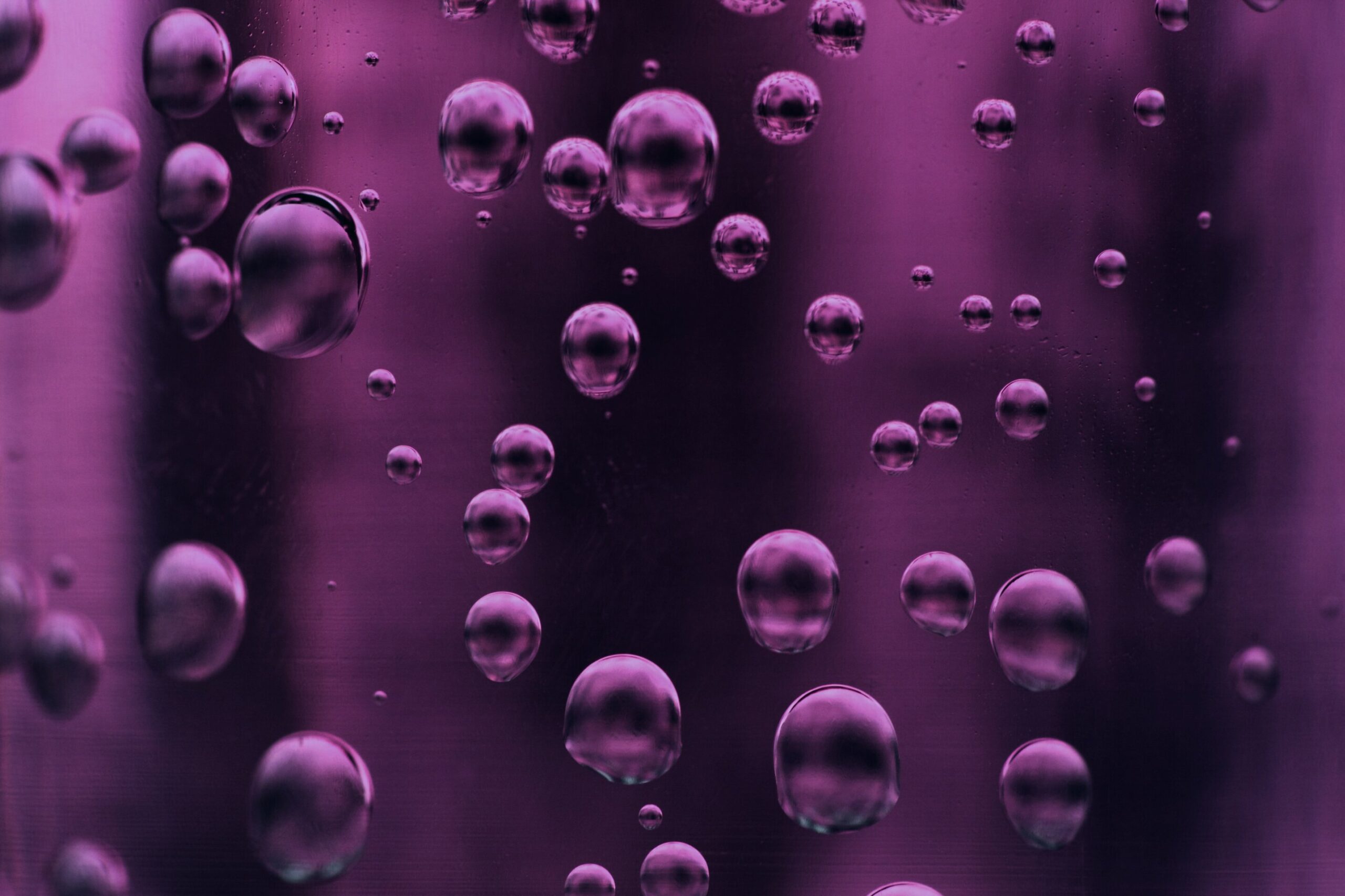
A new, low-cost method for capturing carbon dioxide emissions from power plants and industrial facilities relies on a simple physical phenomenon—the same one that causes bubbles to fizz when popping a bottle of Champagne or cracking open a bottle of seltzer.
The process, called pressure-induced carbon capture (PICC), uses water and pressure to pull carbon dioxide out of exhaust gases before it reaches the atmosphere, offering a cleaner and far less expensive alternative to traditional chemical methods.
Co-inventors Dr. Mark Holtzapple, professor of chemical engineering at Texas A&M University, and Jonathan Feinstein of ExcelThermic Enterprises have filed patents for licensing the technology to power plants, hydrogen facilities, cement kilns, steel blast furnaces and other industrial emitters worldwide. Holtzapple said PICC is a practical solution to an urgent problem because fossil fuel combustion—which releases greenhouse gases into the atmosphere—remains an important component of the global energy mix.
“Our invention is a cost-effective way to address one of the greatest challenges facing humanity,” Holtzapple said. “We can capture carbon dioxide from flue gas using only water and pressure, which makes the process simple, clean and less expensive than competing technologies.”
Traditional carbon capture systems rely on strong chemicals called amines that bind with carbon dioxide to remove it from exhaust gases. Amines struggle to pull more than 90% of the carbon dioxide out of the flue gas, Holtzapple said. Also, the amines are expensive and degrade when exposed to flue gases. Furthermore, permitting 10% of the carbon dioxide to escape into the environment is no longer tenable, he said.
In contrast, PICC uses physical absorption. Because PICC uses no chemical bonds, carbon dioxide pops back out of the water at reduced pressures just as easily as it dissolves in water at high pressure.
“Everybody knows that high-pressure carbon dioxide dissolves in water, and that when you open a bottle of Coca-Cola or beer you see that carbon dioxide bubble back out,” Holtzapple said. Once released, the carbon dioxide can be safely stored or utilized.
How the system works
In operation, flue gas from combusting coal, natural gas or biomass—like forest waste, crop residues or municipal solid waste—is first cooled and compressed. The high-pressure gas is then piped into an absorption column, where cold water flows downward while the gas moves upward through a structured packing that maximizes contact between the two streams. As the nearly clean gas reaches the top of the column, it contacts fresh water entering at the top. There, the last traces of carbon dioxide dissolve into the water, with clean gas releasing into the environment.
The water exiting the bottom of the column contains dissolved carbon dioxide and is transferred to a series of vessels, each operating at lower and lower pressures, where the carbon dioxide progressively bubbles out. Holtzapple said the released carbon dioxide is then ready for compression and injection into underground geological formations, such as saline aquifers, where it is permanently stored.
A lower cost path to near-total capture
Economic analyses show that PICC can capture and compress 99% of carbon dioxide emissions for $26 per metric ton. Other current technologies capture about 90% and cost $50 to $100 per metric ton, Holtzapple said.
Additionally, by adding a small amount of lime—an alkali—to the water, PICC captures 100% of carbon dioxide for an average cost less than $28 per metric ton. At that level of capture, even the carbon dioxide from the combustion air is removed, Holtzapple said.
“Without adding carbon dioxide to the atmosphere, PICC allows us to use abundant fossil fuels on which our civilization is built. Furthermore, by coupling PICC to biomass combustion, we can remove carbon dioxide from the atmosphere cost effectively,” he said.
Citation:
New carbon capture method uses water and pressure to remove CO₂ from emissions at half current costs (2025, November 15)
retrieved 15 November 2025
from https://techxplore.com/news/2025-11-carbon-capture-method-pressure-emissions.html
This document is subject to copyright. Apart from any fair dealing for the purpose of private study or research, no
part may be reproduced without the written permission. The content is provided for information purposes only.
Tech
These Are the Best TVs I’ve Seen This Year

Honorable Mentions
There are so many good TVs available, we can’t add them all to our top list. Here are some great options that either missed the cut or got knocked off our top list by their replacements.
Hisense U8QG: The U8QG is a great buy at its lowest price (around $1,000 for a 65-inch model) and a solid pick above that price, especially if you want eye-searing brightness above all else. I noticed some SDR color accuracy issues (some images looked way too red) and found it difficult to keep it from wildly over-brightening some content. Thankfully, you can always turn it down, and its nuclear power plant is paired with excellent black levels, deep contrast, and plenty of features. I actually prefer last year’s similarly punchy U8N, but it’s getting harder to find in stock.
TCL QM7K (2025): I’ve had a love/hate relationship with the QM7K. Part of TCL’s new Precise Dimming series, its opulent black levels and contrast reach toward OLED heights, matched by good brightness for some spectacular moments. The problem? My review model’s colors were off-kilter, with an odd green tint in select black and grayscale content. Thankfully, I confirmed that TCL’s latest firmware update fixed the issue. The TV’s picture processing and colors still don’t catch premium TVs, and this is the second year in a row I’ve found a troubling performance issue with the QM7. You shouldn’t buy it at full price, but if you can get the 65-inch model for $1,000 or less, it’s a pretty enticing choice.
Samsung S95D: Samsung’s previous S95 matte-screen marvel is still a fabulous QD-OLED TV that would be adored in virtually any TV room. We like the newer version better, which begs fewer compromises when it comes to deep black levels, but if you can find the previous version on a killer deal, you won’t be sorry.
Hisense U7N: If you’re after a TV at similar pricing to the QM6K but with some extra eye tingle, last year’s Hisense U7N offers a serious brightness boost over our top pick and still ranks among our favorite options for your money. Its blooming control and screen uniformity aren’t as refined as the QM6K’s but it’s got plenty of features, including great gaming credentials and a streamlined Google TV interface. It’s still a great buy while stock lasts, especially at $700 or less.
Sony A95L: Sony finally replaced this sweet screen with the 2025 Bravia 8 II, which offers similarly incredible picture processing and upscaling alongside enhanced colors and higher HDR brightness. That shouldn’t deter you from considering the A95L (9/10, WIRED Recommends) at a lower price. With fabulously immersive image quality and an intuitive Google TV interface, this is a premium package that’s very enticing on a good sale.
Sony Bravia 7: The Bravia 7 is a gorgeous display, offering brilliant brightness, naturalistic colors, and suave finesse in the subtle details. Its biggest knock is very poor off-axis viewing, which could be tough to swallow at its high list price. Otherwise, it’s worth considering for fans of that Sony glow, especially since Sony seems to be discounting its best QLED TVs much more liberally than its OLED models.
Other TVs We’ve Tested
Samsung The Frame Pro: I put the Frame Pro through our full review process and came away both in limbo due to software issues and (so far) unimpressed with the performance. The matte screen looks slick when displaying art, especially if you purchase one of the add-on frames (a frame for the Frame?) from Samsung or Deco TV Frames. Picture performance was otherwise middling at best. It’s much brighter than the traditional Frame, and the colors pop, but its edge-lit mini LED system does not look good with dark 4K HDR content, even in the day. Moreover, I had trouble with its very sluggish operating system (which others have reported) and stuttering Blu-ray playback. We’re awaiting a second model, which we hope relieves the software issues, but steer clear for now.
TCL QM7: There’s only one thing holding back 2024’s beautifully balanced QM7: a software glitch. During my review, I experienced an issue where adjusting SDR backlight levels affected HDR, which can lead to severe brightness limitations. While TCL fixed the issue in a firmware update for me, I never got confirmation on a broader OTA fix. Most folks probably won’t have this issue, so the QM7 is still worth considering, but make sure and check it before throwing out the box.
TVs We’re Testing Next
Samsung S90F: The follow-up to our favorite gaming TV could be among the best OLED values of the season (it usually is). I’ll be long-term testing it over several weeks, so I should find every nook and cranny for an in-depth evaluation.
Power up with unlimited access to WIRED. Get best-in-class reporting and exclusive subscriber content that’s too important to ignore. Subscribe Today.
-

 Entertainment1 week ago
Entertainment1 week agoChina unveils£5.4 bn Fujian, its most advanced aircraft carrier yet
-

 Politics1 week ago
Politics1 week agoIDF lawyers warned of possible Gaza war crimes: US intel findings
-

 Tech6 days ago
Tech6 days agoFrom waste to asset: Turning ethanol production CO₂ into jet fuel
-

 Entertainment1 week ago
Entertainment1 week agoRobert Pattinson jokes about competing with Gen Z
-

 Sports1 week ago
Sports1 week agoIsraeli cycling team loses top sponsor despite honoring request to remove country from name
-
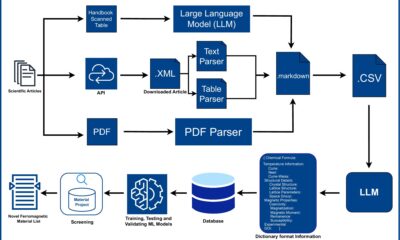
 Tech1 week ago
Tech1 week agoMagnetic materials discovered by AI could reduce rare earth dependence
-
Sports7 days ago
College football winners and losers: The catch of the year saves Indiana
-

 Entertainment1 week ago
Entertainment1 week agoAlex Cooper apologizes to Taylor Swift for bizarre admission










